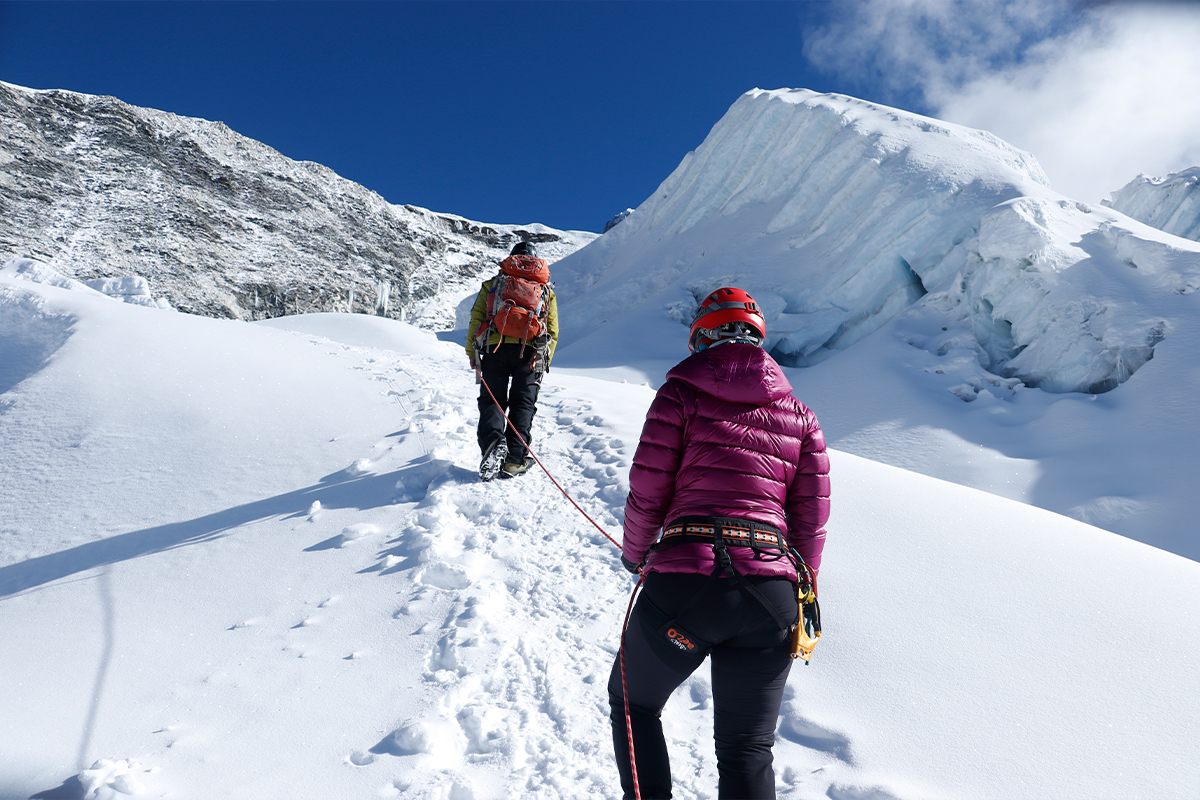The Nepal Government has officially declared a notable increase of 36% in permit fees for climbers attempting to summit Mount Everest, starting September 1, 2025. This marks the first major adjustment in almost ten years and demonstrates how officials are trying to balance revenue generation, manage overcrowding, and ensure the sustainability of the highest peak in the world.
Table of Content
New Everest Permit Fee Structure
Under the revised fee structure, the permit fee for climbing Everest has been increased by 36% for each climbing seasons which are broken down as:
- Spring (April- May): $15,000 (Previously $11,000)
- Autumn (September-November): $7,500 (Previously $5,500)
- Monsoon (June-August) and Winter (December-February): $3,750 (Previously $2,750)
Why the Hike?
This decision of the government has been driven by several factors: Mount Everest attracts hundreds of climbers each year, especially during the spring season, resulting in overcrowded routes, environmental degradation, and safety risks. The increased permit fees are intended to achieve the following:
- Generate More Revenue: The revenue will go towards supporting conservation, improving infrastructures and ensuring increased safety measures for climbers.
- Control Overcrowding: Higher fees may discourage inexperienced climbers or larger groups, thereby reducing the risks associated with overcrowding on the mountain.
- Promote Sustainability: With rising concerns about waste management and environmental impact, the extra revenue can be used to cleanup initiatives and eco-friendly projects.
Implications for Climbers
The increased permit fees will add to the existing substantial cost of the Everest Expedition to the climbers. In addition to the permit fee, expeditions also include costs for guides, equipment, insurance and the logistics that bring the total up to anywhere between $45,000 to $1,50,000.
Veterans in climbing and organizing expeditions say that the increase in the fee is a justified one. The majority of people consider this to be a move toward ensuring that the ever-increasing popularity of Everest climbing does not happen at the cost of safety and environmental preservation.

Shorter Permit Validity
Other major changes include the fact that the validity period of a climbing permit has been reduced from 75 to 55 days; this move is engaged towards regulating climbing activities and ensuring that there are controlled number of climbers on the mountain.
“Indu Ghimire, a joint secretary at the Tourism Ministry has also clarified that all confirmed climbing permits for the spring season of 2025 shall not be subject to such changes.”
Environment Protection in Limelight
The major role of the new regulations is an attempt at solving the chronic issue of trash piling up on Everest. The new rules require every climber to pack out their human waste from the mountain to the base camp for disposal. From the coming spring season onwards, biodegradable bags for collecting waste will be mandatory, especially in the higher camps where no bathroom facilities are available.
In base camps, toilet tents and barrels for human waste collection have been set up, but in the high camps, it has always been unsystematic--pits or open dumping. The Khumbu Pasang Lhamu Rural Municipality has introduced biodegradable bags during the last spring climbing season and has now made their use mandatory for all climbers scaling peaks above 8,000 meters.
Mounting Garbage Problem
The Unsustainable and unhygienic practices by the climbers summiting Everest have long spoiled the beauty of the mountain with discarded oxygen cylinders, abandoned tents, food packaging, and human waste. It is estimated that in the spring season of 2023, 100 tonnes of waste were produced at Base Camp and higher camps, out of which only a portion was removed.
Compulsory waste collection and the new ban on carrying unauthorized items is part of the government's wider efforts to save the fragile ecosystem of the region of Everest.
Challenges Ahead
The changes come at a time when Everest is seeing record numbers of climbers. In the 2024 spring climbing season alone, 421 permits were issued to fee-paying individuals, with nearly 600 climbers reaching the summit and over 2,000 people assembling at base camp. But the uptick in climbers has also meant more accidents: eight people died last year.
These rules and regulations aim to balance the keeping of Mount Everest open as a destination for the world's adventurers while preserving the mountain's natural environment for the future. The mixed response towards an increased fee and regulations just underscores the fact that the regulations mark a very vital beginning to finding solutions towards environmental and logistical challenges posed by rising interests in the world's highest peak.


